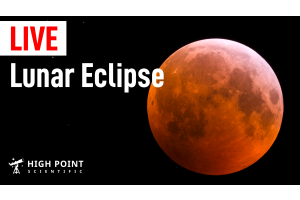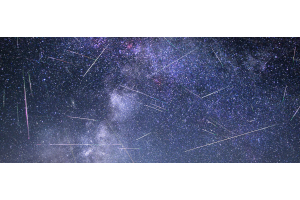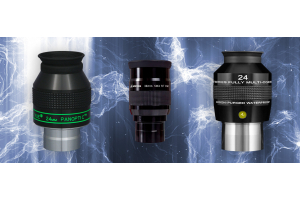
A solar eclipse occurs when the Moon passes between the Sun and the Earth, casting a shadow on our planet's surface. When this happens, observers can potentially witness the Moon obscuring the Sun, creating a dramatic and awe-inspiring celestial display in the process. So what are the types of solar eclipse? And how are they different from one another?
How Does a Solar Eclipse Occur?
The science behind how solar eclipses occur is relatively straightforward. As you know, the Moon orbits around the Earth, and the Earth orbits around the Sun. When the Moon passes between the Sun and the Earth, and the three are perfectly aligned, the Moon casts a shadow on the Earth’s surface. In that situation, anyone standing within the Moon’s shadow would see the Moon completely cover the Sun, and they would experience a total solar eclipse.
In all, there are actually four types of solar eclipse, and the eclipse you see will very much depend upon the specific circumstances; both in terms of the alignment of the Sun, Moon and Earth, and your vantage point. The four types of solar eclipses are as follows:
- Total solar eclipse
- Partial solar eclipse
- Annular solar eclipse
- Hybrid solar eclipse
 Click to Enlarge Image
Click to Enlarge Image
 Click to Enlarge Image
Click to Enlarge Image
 Click to Enlarge Image
Click to Enlarge Image
What is a Total Solar Eclipse?
As mentioned above, a total solar eclipse occurs when the Sun, Moon and Earth are precisely aligned. The Moon casts a shadow on the Earth, which moves across the Earth’s surface as the Moon passes between the Earth and the Sun. Anyone standing within the shadow’s path (known as “the path of totality”) will see a total solar eclipse.
On average, roughly 27% of solar eclipses are total, and they tend to occur once every 18 months to two years or so.
A total solar eclipse essentially occurs in three phases: first there’s the partial phase, followed by the main event - totality - and then there’s a second partial phase.
The partial phase of a total solar eclipse usually lasts for a few hours, during which time you’ll see the Moon move across the Sun’s disc. (IMPORTANT: do not ever look directly at the Sun without using some form of eye protection - even during the partial phase. Doing so can cause permanent damage or blindness. See our guide on Viewing the Sun Safely With Eclipse Glasses for more information.)
During this time, you’ll notice your surroundings slowly becoming darker, almost as though you’re wearing sunglasses. Closer to totality, you may also notice the temperature dropping, birds, insects and animals becoming quiet, and the stars slowly appearing in the sky.
On average, if you’re standing right in the center of the path of totality, you’re likely to experience about two to three minutes of darkness, but the closer you are to the edge of the path, the shorter totality will be for you. Those on the very edge of the path may only see a few seconds of totality.
During totality itself, you’ll see the darkened disc of the Moon surrounded by the pearly white light of the Sun’s outermost atmosphere. Called the solar corona, this is a feature that’s only visible during totality. Your surroundings, and the sky above, will appear as they do during twilight, with the brightest stars and planets being visible.
Once totality ends, the second partial phase begins and lasts another few hours as the Moon continues to move along its orbit, revealing the Sun’s disc as it goes. The sky and your surroundings brighten, the temperature rises and the birds, insects and animals start making noises again. Life, all around you, slowly returns to normal.
What is a Partial Solar Eclipse?
Unfortunately, not everyone is lucky enough to experience a total solar eclipse, but many will still have the opportunity to witness the partial phase. Observers within the Moon’s shadow see a total eclipse because the Sun, Moon and Earth are perfectly aligned from their viewpoint. Move away from the shadow and the alignment is broken, and the further you are from the shadow (more specifically, the center of the shadow) the greater the misalignment.
Partial solar eclipses don’t just occur as part of a total solar eclipse. The Moon's orbit is slightly tilted compared to the Earth's orbit around the Sun, which means that sometimes the three aren’t perfectly aligned. In this case, the Moon only partially covers the Sun, and observers on Earth see a partial eclipse.
Perhaps not surprisingly, these types of eclipses - where the Sun, Moon and Earth are not aligned and no total eclipse is visible anywhere - are the most common, and can occur three or four times in a single year.
The experience itself will vary, depending on how much of the Sun is obscured from your location. The chances are, if the Sun is less than 50% eclipsed, you may not notice any difference in your surroundings at all. The more the Sun’s disc is covered, the more likely it is you’ll notice a dip in light, but you’re not likely to notice a temperature drop or your surroundings grow quiet unless the Sun is almost completely eclipsed.
What is an Annular Solar Eclipse?
Eclipses are further complicated by the fact that the Moon does not orbit the Earth in a perfect circle. Rather, its orbit is elliptical (oval-shaped) in nature. As a result, the Moon is not always at the same distance from the Earth.
So when the Sun, Moon and Earth are aligned but the Moon is further from the Earth than usual, the Moon appears a little smaller in the sky. Under normal circumstances, a total solar eclipse would occur, but since the Moon’s disc appears a little smaller, it’s not quite large enough to entirely cover the Sun.
In that situation, instead of totality, observers see a bright ring, or annulus, of sunlight around the Moon's darkened disc, and we have an annular solar eclipse. The lead-up to an annular solar eclipse is the same as a total solar eclipse, and observers will witness the partial phase as normal.
However, since there’s still a little sunlight visible, your surroundings and the sky above may not be as dark, the temperature won’t drop as much and you’ll see fewer bright stars than you would with a regular total eclipse. You’ll also miss out on the solar corona, which is only visible during a total solar eclipse.
Since annular eclipses don’t require the Moon to be at a specific distance from the Earth, they tend to be a little more common than a total solar eclipse.
What is an Hybrid Solar Eclipse?
Here’s an eclipse you might not have heard of. A hybrid solar eclipse is one where observers at the start or end of the path of totality will see an annular eclipse, while those near the middle of the path will see a total eclipse.
You might be wondering how this can happen; again, it has to do with the distance of the Moon at the time of the eclipse. At the start of the eclipse, when the Moon’s shadow first falls upon the surface of the Earth, the distance between the Earth and the Moon is a little greater. This is due to the curvature of the Earth. Consequently, the Moon appears slightly smaller and isn’t quite able to cover the entire Sun, and observers see an annular eclipse.
However, near the middle of the path (ie, as the path is midway through its journey across the Earth’s surface), again, thanks to the curvature of the Earth, there is less distance between the Moon and observers on the ground. The Moon therefore appears slightly larger than at the start of the path, and observers experience a total solar eclipse.
As the Moon continues to move along its path, the distance gradually increases again, the Moon’s apparent size decreases, and those observers near the end of its path will see an annular eclipse. Perhaps not surprisingly, hybrid eclipses are the rarest, and only account for roughly 3% of all solar eclipses.
Eclipses are not like the full Moon: they don’t occur every month and there are many who, having experienced a total solar eclipse firsthand, will travel thousands of miles to experience it again. Regardless of the type of eclipse, if you’re lucky enough to have the chance to experience it, be sure to take it!
This Article was Originally Published on 05/31/2023

Learn More
Interested in learning more about solar and lunar eclipses? Not sure where to begin? Check out our Astronomy Hub!









